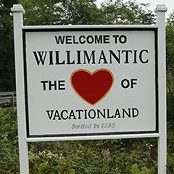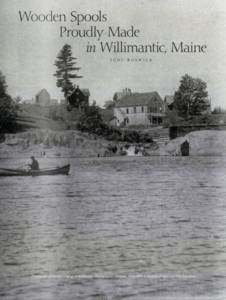History of Willimantic

According to folklore, the name “Willimantic” is derived from an Indian word meaning “Place of the Swift Running Waters,” an apt designation for this locality. Of course, our town was named after Willimantic, Connecticut, built on the edge of the Willimantic River in Connecticut. The Jillson Brothers cotton mill was built there in 1824, and later became the spool-making shop of the Willimantic Linen Company. Prior to this time, thread wound on spools only came in black or white; colored thread was available in bulk skeins only. But from the beginning, the Willimantic company offered spooled thread in a wide variety of colors. Business was so good that in 1879 the company decided to buy property in Howard, Maine, at Greeley’s Falls on Wilson Stream, near the head of Sebec Lake. The first recorded settlement in T8R8 (now Willimantic) was in 1826, following the purchase of the town from Harvard College by Aquilla Davis. At least 14 families had settled in the western part of the town by the 1850s. The first public school was opened in a one-room log house in 1856. Incorporated as the town of Howard on February 22, 1881, two years later the name was changed to Willimantic.
Howard, Maine was named after an early homesteader, Abijah Howard (about 1845–unknown), a Vermont man.
In 1880, the Willimantic Linen Company built a large woodworking factory in our town, close to the source of timber used to make its wooden spools. In 1881, Howard was renamed Willimantic, the name that it continues to bear today. In 1890, the population of Willimantic was at its peak at 446 residents. Since the 1950s, the population was averaged 150 residents.
In 1903, they closed the spool factory in Willimantic, and many families relocated to Milo to work in the mill there. William Earley bought the mill buildings and land in Willimantic for a hotel and later purchased more land for sportsmen’s camps, which he called Earley’s Camps. Herman Bayerdorffer purchased the property in 1965 and renamed it Two Falls Camp.

